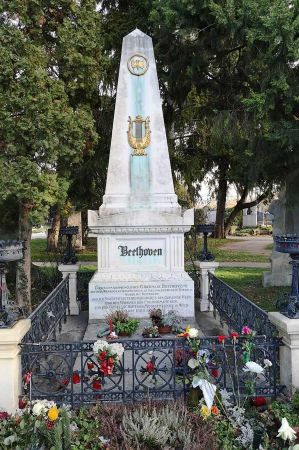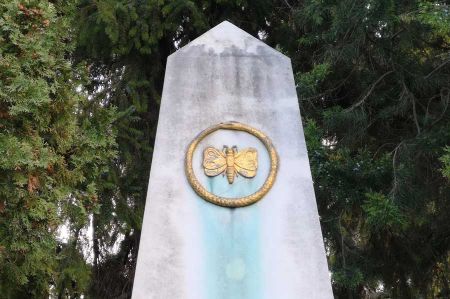Symbolism for eternal life - the tail-eater Ouroboros
- Written by Portal Editor
Our tour of the central cemetery in Vienna brought not only our amazement due to the huge dimensions of the cemetery, the sometimes bizarre types of use and the social integration into the local people community, but also numerous insights into the symbolism on the tombstones and monuments.
A topic that Bertl had also dealt with a lot, it is no wonder that we made numerous discoveries and had discussions about the signs during our tour.
Everyone has probably heard of the so-called Freemasons and their symbols with angles and circles, probably even seen them before. It was interesting to see that this symbolism exists across religions on many tombstones. However, we particularly noticed the symbol for eternal life, the snake that bites itself into the tail. This is particularly so since this symbol was also visible on the gravestone or, better, a memorial stone for Beethoven. One can only guess at the meaning of this symbol here.
The symbolism of the tail-eater Ouroboros
 The symbol of the snake biting its own tail was already known in antiquity and is a symbol for infinity, the eternal return and the union of opposites such as light and dark or active and passive. The snake biting its tail thus indicates that the end corresponds to a new beginning in constant repetition, that the conclusion of a path or process also means a new beginning.
The symbol of the snake biting its own tail was already known in antiquity and is a symbol for infinity, the eternal return and the union of opposites such as light and dark or active and passive. The snake biting its tail thus indicates that the end corresponds to a new beginning in constant repetition, that the conclusion of a path or process also means a new beginning.
From ancient Greek, Ouroboros stands for "tail-eater" and appears as a symbol as an archaic motif common in many cultures, often half of the animal is white and the other is painted black, which makes the comparison to yin and yang imposing itself. Its origins go back to ancient times. Together with the symbolism that comes with the image of the constantly rejuvenating snake, the circular connection of the animal represents a meaningful metaphor for a cyclical repetition - such as the cycle of times, the doings and re-creations of the world, dying and rebirth, in the derived sense too of eternity (like the simple circle too).
The alchemical symbolism of the Ouroboros
 In alchemical symbolism, the Ouroboros is the symbol of a self-contained and repeated process of change in matter, which is intended to refine substances by heating, evaporating, cooling and condensing a liquid. The serpent, which is closed in a circle, is often replaced by two dragon-like beings that connect the mouth and tail end, the upper one being reproduced as a symbol of volatility like a winged dragon.
In alchemical symbolism, the Ouroboros is the symbol of a self-contained and repeated process of change in matter, which is intended to refine substances by heating, evaporating, cooling and condensing a liquid. The serpent, which is closed in a circle, is often replaced by two dragon-like beings that connect the mouth and tail end, the upper one being reproduced as a symbol of volatility like a winged dragon.
It is the symbol of the Philosopher's Stone, which should also consist of a valuable and a worthless material.
In ancient Egypt, this symbol also stood for eternal life and rebirth. Perhaps this is the intellectual origin of the use as grave decoration on the memorial stone for Beethoven.
Please read as well:
Eerily beautiful - the central cemetery of Vienna
Kyffhäuser - Barbarossa and the mythology about his death
